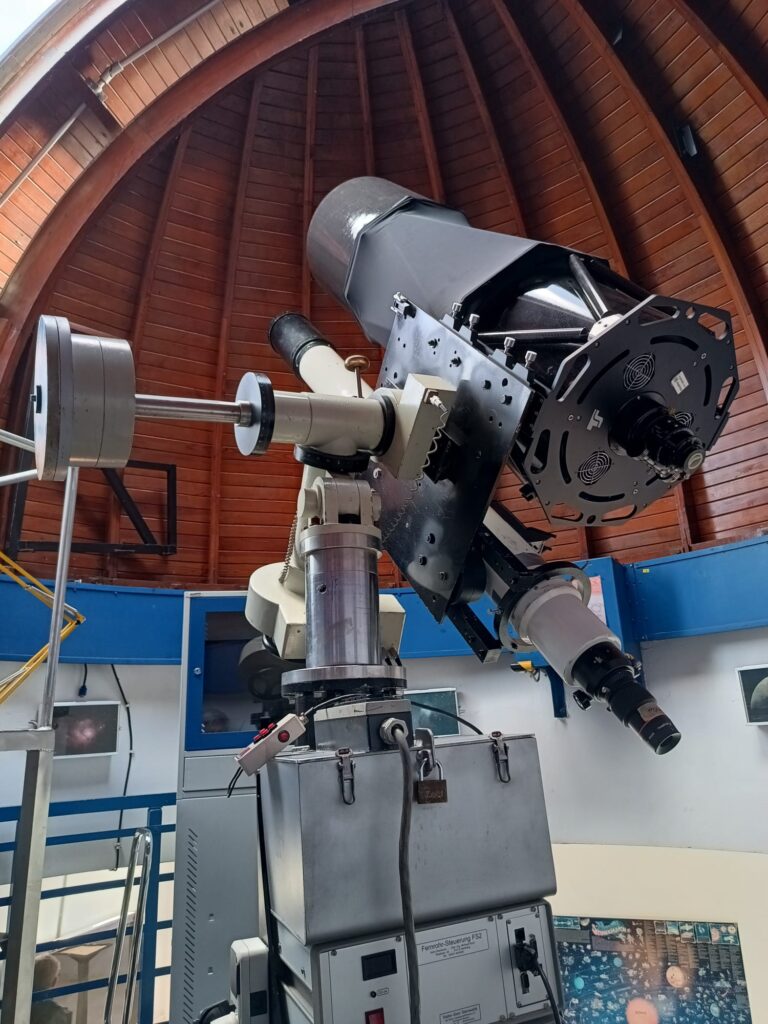– Observatory, planetarium and lecture –
Englisch
Originally, we had only booked participation in the lecture “Measuring the invisible universe with the help of gravitational wave detectors” by Dr. Gudrun Wanner at the Olbers-Gesellschaft e. V. in Bremen. It was scheduled to start at 7:30 p.m. Since we knew that the lecture would take place in the building of the Bremen University of Applied Sciences, which also houses the Walter-Stein-Sternwarte we inquired whether a short tour of the historic observatory would be possible. We quickly received a positive response from the association's chairman, Dipl.-Ing. Holger Voigt. The observatory tour was scheduled to begin at 6 p.m.—exclusively for us.
So we set off early in the afternoon, excited about what awaited us. Mr. Voigt and a colleague then gave us a comprehensive insight into the observatory's technology and the diverse activities there in Bremen.
The Olbers Gesellschaft Bremen is a long-established astronomical association, founded in 1920 and named in honor of the famous Bremen physician and astronomer Heinrich Wilhelm Olbers. It has played and continues to play a significant role in promoting astronomy in Northern Germany, particularly through its celestial observations, lectures, and other educational offerings. The cooperation with the university is naturally advantageous in this regard.
On the way to the lecture hall, we passed the planetarium, where the director allowed us a quick look inside and at the technical equipment. Having the observatory and planetarium so close together is a huge advantage. While the city location is a disadvantage for observation due to light pollution, the proximity to Bremen's population is extremely beneficial.
The subsequent lecture was of exceptional quality. Firsthand – Dr. Wanner is instrumental in the development and construction of the space-based gravitational wave detector. LISA beteiligt – erhielten wir in dem mit über 60 Personen gut gefüllten Hörsaal aktuelle Informationen zum Stand der Erforschung des „unsichtbaren“ Universums, i. e. weiße Zwerge, Neutronensterne und schwarze Löcher. 2035 sollen die drei LISA-Satelliten gestartet werden.
The time until then will likely remain exciting for the detector's developers. The same applies to us amateur astronomers, given the other detectors we were introduced to that are also currently in development. The deep exploration of the cosmos is in full swing! We began the return journey to Osnabrück very satisfied, inspired by the diverse impressions we had in Bremen.


